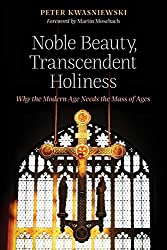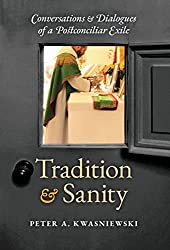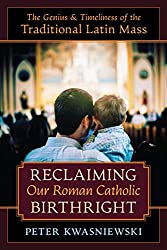
Many good, decent Catholics are aware of the obvious evils of our time, including (though hardly limited to) abortion, pornography, euthanasia and the environments created by divorce and same-sex marriage that cannot help but scourge our children.
These are blatant. And many faithful Catholics, traditionalists, charismatics and others, take admirable, even heroic action to counter them.
But what of more subtle forms of evil? What to do when something is not a glaringly, flagrant contradiction of all the Church has taught for two thousand years, but rather works in a subtle, insidious fashion – drip-by-drip-by-drip – slowly carving out a great canyon of despair?
Truly, I look at the world and see evils scarcely spoken of: whether it is the way “harmless” television series champion mediocrity, drip-by-drip-by-drip, lowering our moral standards decade by decade or whether it is the “harmless” way poor liturgy likewise champions mediocrity, drip-by-drip-by-drip, decade by decade.
We are lulled to sleep by all these “harmless” hypnotic REPETITIONS in our lives, whether it is hearing lyrics like “Imagine there’s no heaven” again and again and again or whether it is attending the most sublime miracle this world has to offer – the Holy Sacrifice of the Mass – and hearing again and again and again banalities that obscure what truly happens at the altar.
In short: we need to be awake to every form of evil, whether flagrant or subtle.
The glory of Peter A. Kwasniewski’s Tradition and Sanity is that it not only reveals bracing, unflinching awareness of the tragedy of the liturgy, but also greatly serve to promote bracing, unflinching awareness.
Kwasniewski is very aware of all the subtle ways so many Catholics, well . . . FLINCH when confronted with this tragedy.
“Oh, it can’t really be that bad can it? Father Bob is a nice guy! Surely it’s not that big a deal, if he likes to crack jokes at the altar or the musak the choir sings is insipid or nobody really has the slightest idea His Body, His Blood have just become present at the Altar?”
Here Kwasniewski lays out – precisely and meticulously – why it is a big deal, no matter how “nice a guy” Father Bob is.
And he shows why the traditional Latin Mass makes up for the human failings of nice guys like Father Bob.
Because if Father Bob began to celebrate according to the traditional rite, everything about that rite would compensate for his human failings, just as it has compensated for priests’ human failings for nearly two thousand years . . .
Yes, a host of arguments is marshalled here on many fronts: historic, theological, philosophical, even poetic – all very revealing as to how modern liturgy has fallen into a rationalist, utilitarian, anthropocentric (about us rather than Him!) trap.
It is yet another impressive, erudite feat from Dr Kwasniewski, whose earlier books I praised at this site and who I pay further tribute to in a video at the bottom of this page.
This book, though, is different from the others. Much of its contents are either written in dialogue format or indeed are actual dialogues (interviews) with Kwasniewski. The result makes the book very readable indeed and some might possibly find it easier to absorb than his earlier efforts.
Occasionally, the tone is sharper, too, than the previous books, reflecting a heart in pain:
Everywhere the liturgy is in shambles. It is badly celebrated, with scandalous contempt for the sacred . . . The diseases of individualism, utilitarianism, and minimalism have settled into every part of the body like a wasting cancer. The liturgy is in an almost perpetual state of abuse.
That which is most precious, most pure, most holy, and most sanctifying has become an abomination of desolation.
This situation moves me to anguish, indignation, and zeal, as it does anyone who wishes to serve the Lord in the “beauty of holiness.” I wish to do something about it . . .

Now, not so long ago, I was upbraided online for praising Kwasniewski – or at least I felt upbraided by a man I respect who, moreover, has done much to support the Latin Mass over many years.
What can I say? Perhaps Kwasniewski has a different, more passionate temperament than this man.
If so, God created passionate temperaments too, along with milder ones.
I know, right now, we need such passion.
I would also note Kwasniewski is a far more acute observer of Vatican politics and Catholic cultural attitudes than the vast majority of us. The book has much to offer in these terms, too.
And one may well find that the more one knows, the more one’s heart is in pain.
We need hearts in pain, rather than hearts asleep.
We need more people moved to “anguish, indignation and zeal” about the state of the liturgy.
What can I say?
I say: this book is filled with unflinching passion, erudite argumentation, poetic sensitivity, plus awareness of what is truly going on in today’s Catholic Church.
And I pray: may all these gifts that Kwasniewski gathers here awaken us to the most serious, fundamental malady of our age: how the Church, which is the Heart of the World, has forgotten her way.
Foreword for Monarchy by Roger Buck

Buying Books at Amazon Through These Links Gives Us a Commission. This Supports Our Apostolate. Thank You if You Can Help Us Like This!








